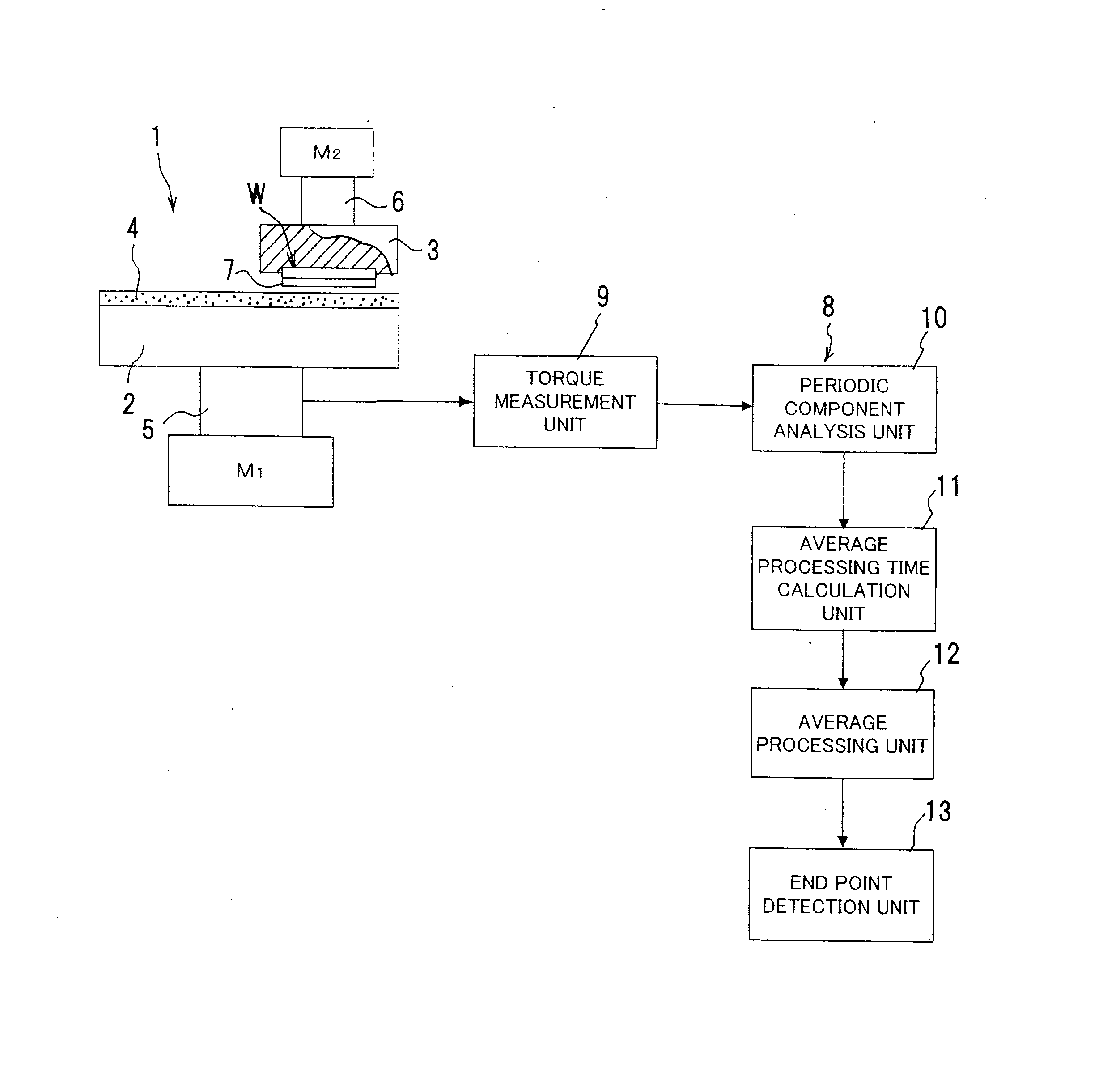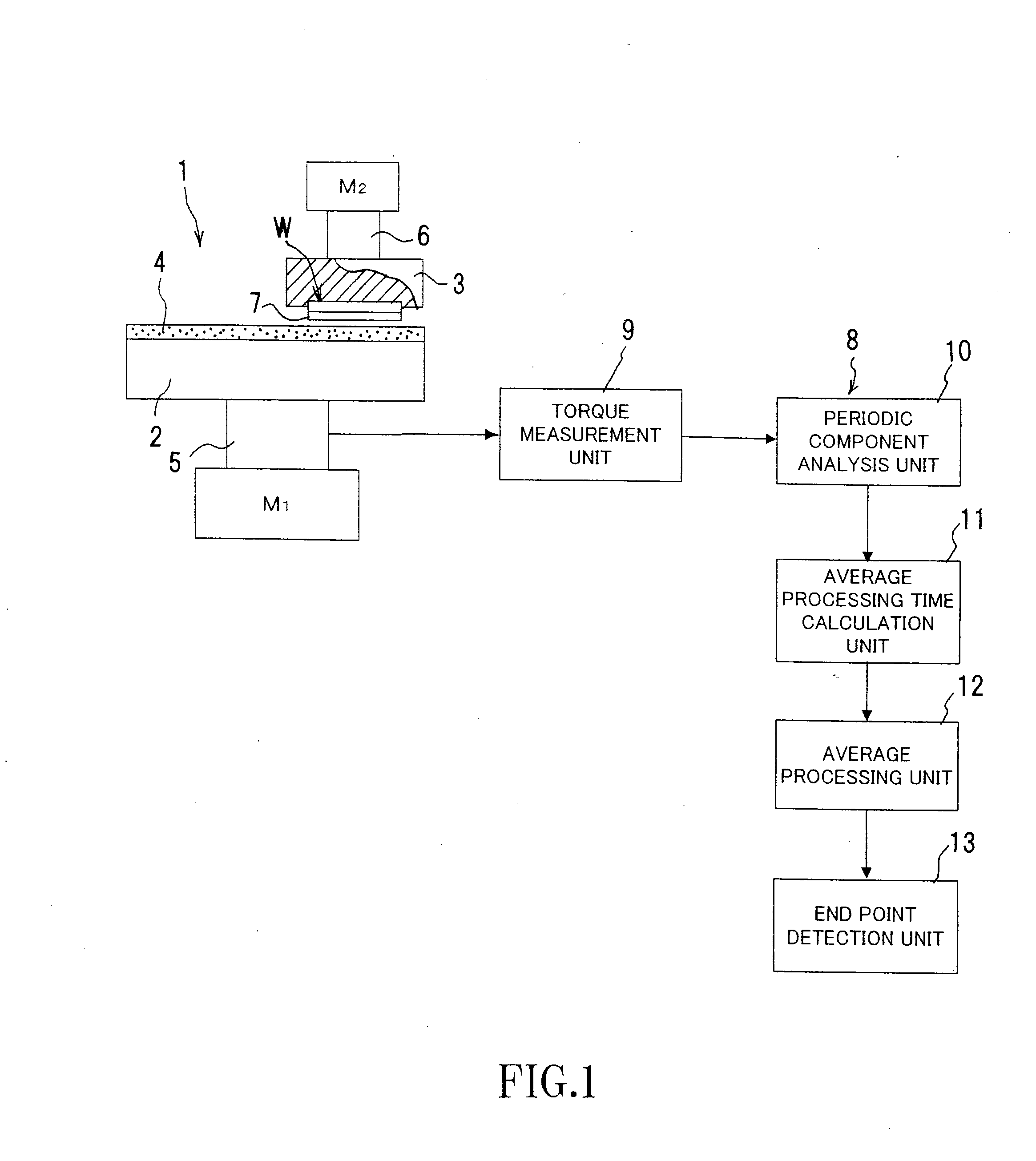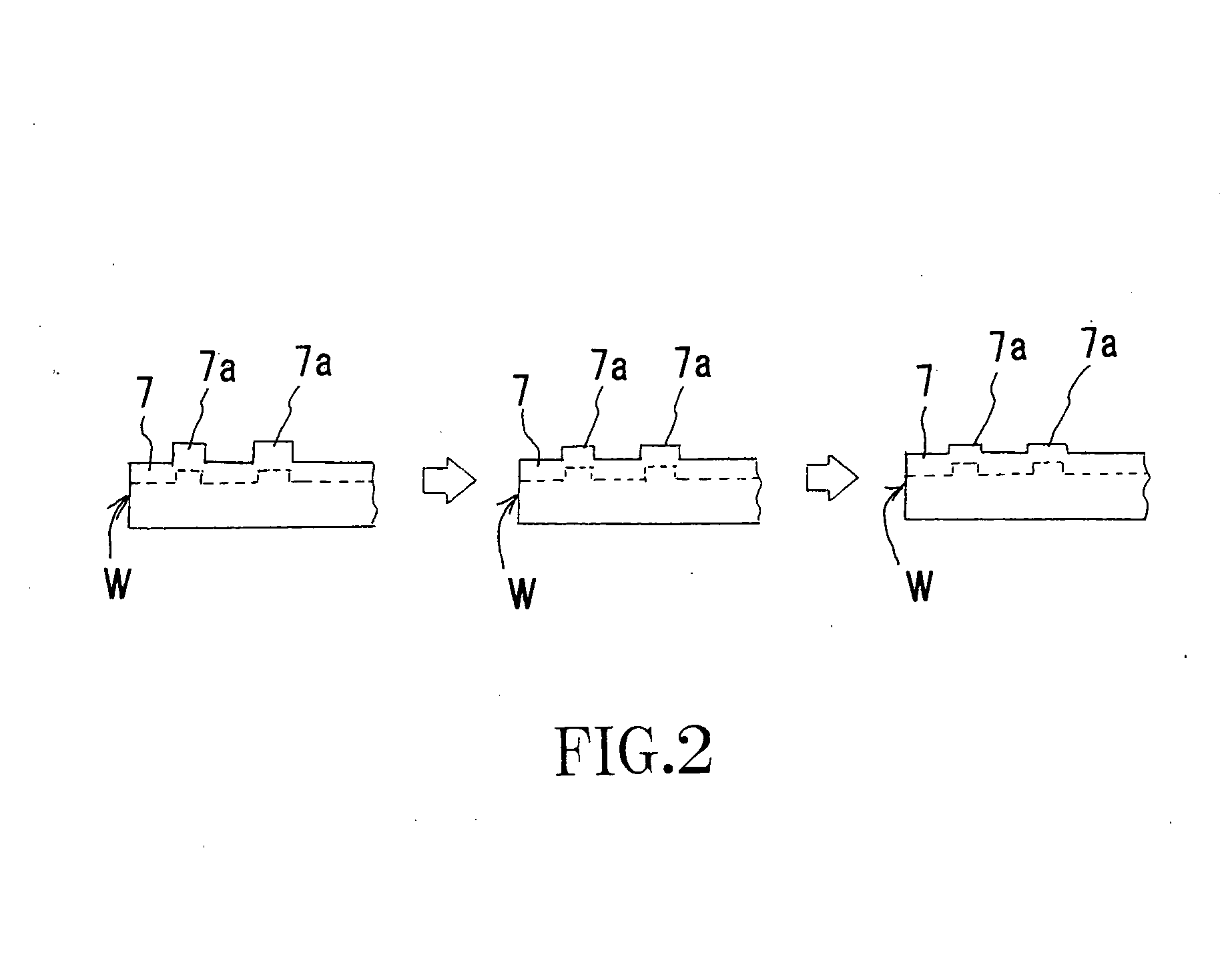Polishing end point detection method utilizing torque change and device thereof
a detection method and torque change technology, applied in the direction of force/torque/work measurement apparatus, lapping machines, instruments, etc., can solve the problems of sudden reduction or the like at the polishing end point in the torque change, the polishing end point cannot be detected, so as to achieve reliable detection, reduce the torque of the polishing, and high precision
- Summary
- Abstract
- Description
- Claims
- Application Information
AI Technical Summary
Benefits of technology
Problems solved by technology
Method used
Image
Examples
Embodiment Construction
[0061] Hereinafter, a preferred embodiment of the present invention will be described in detail with reference to drawings. First of all, a configuration of a polishing end point detection device which is according to the present embodiment and utilizing torque change will be described. FIG. 1 is a block diagram of a schematic configuration of a chemical mechanical polishing device and the polishing end point detection device.
[0062] In FIG. 1, the chemical mechanical polishing device 1 is mainly composed of a platen 2 and a polishing head 3. The platen 2 is formed into a disk-like shape, a polishing pad 4 is attached to the upper surface thereof, and a platen motor M1 serving as a rotation drive source is coupled to the center of the lower surface thereof via a platen rotating shaft 5. The polishing head 3 is formed into a disk-like shape smaller than the platen 2 side and a head motor M2 serving as a rotation drive source is coupled to the center of the upper surface thereof via a...
PUM
 Login to View More
Login to View More Abstract
Description
Claims
Application Information
 Login to View More
Login to View More - R&D
- Intellectual Property
- Life Sciences
- Materials
- Tech Scout
- Unparalleled Data Quality
- Higher Quality Content
- 60% Fewer Hallucinations
Browse by: Latest US Patents, China's latest patents, Technical Efficacy Thesaurus, Application Domain, Technology Topic, Popular Technical Reports.
© 2025 PatSnap. All rights reserved.Legal|Privacy policy|Modern Slavery Act Transparency Statement|Sitemap|About US| Contact US: help@patsnap.com



